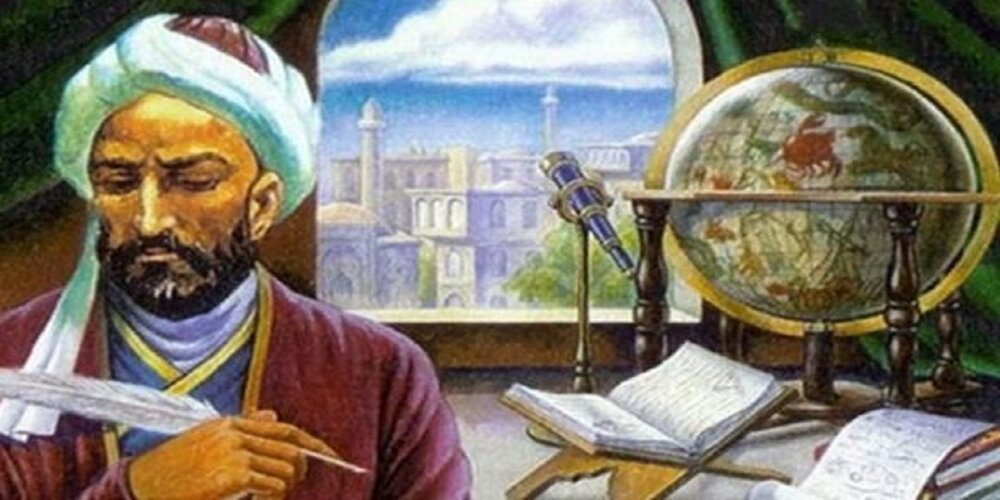Khajeh Nasir al-Din Toosi, the most eminent engineer of his time

TEHRAN – The National Engineering Day is observed in Iran on February 24, honoring engineers for their efforts and achievements to change the world for the better.
It marks and commemorates the birthday of Khajeh Nasir al-Din Toosi (1201–1274), a Persian polymath and prolific writer, who is considered to be one of the greatest Persian scholars. He is also known as a philosopher, mathematician, astronomer, theologian, physician, and prolific writer.
Toosi was born in Toos, northeastern Khorasan region, in the year 1201 and began his studies at an early age. He studied Arabic, the Qur'an, Hadith, Shi'a Jurisprudence, logic, philosophy, mathematics, medicine, and astronomy.
At a young age, he moved to Nishapur to study philosophy under Farid al-Din Damad and mathematics under Muhammad Hasib.
As the armies of Genghis Khan swept his homeland, he fled to join the Ismailis and made his most important contributions in science during this time, while he was moving from one stronghold to another. He finally joined Hulagu's (Genghis Khan's son) ranks, after the invasion of the Alamut castle of the Hashshashin (Assassins) by Mongol forces, according to the portal of Khajeh Nasir ad-Din Toosi University.
The Mongol ruler, Hulagu Khan, built an observatory in Maragheh for Toosi. Toosi is considered the first of the Maragheh School of astronomers, who made significant contributions to the development of astronomy. Notable members of that school were Mu’ayyad al-Din al-’Urdi and Qutb al-Din al-Shirazi.
Toosi made very accurate tables of planetary movements as depicted in his book Zij-i ilkhani (the Ilkhanic Tables). This book contains astronomical tables for calculating the positions of the planets and the names of the stars. His planetary system was the most advanced of his period and was used extensively until the development of the heliocentric model in the time of Copernicus. Between Ptolemy and Copernicus, he is considered the most eminent astronomer of his time.
He was perhaps the first to treat trigonometry as a separate mathematical discipline and in his Treatise, on the Quadrilateral, he was the first to list the six distinct cases of a right-angled triangle in spherical trigonometry.
He invented the geometrical technique called a Toosi-couple for his planetary models, which generates linear motion from the sum of two circular motions. He also calculated the value of 51" for the annual precession of the equinoxes and contributed to the construction and usage of some astronomical instruments including astrolabe. He gave the first extant exposition of the whole system of a plane and spherical trigonometry.
A 60-km diameter lunar crater located on the southern hemisphere of the moon is named after him as "Nasireddin". He also wrote extensively on biology and is one of the early pioneers of a kind of evolutionism in scientific thought.
**** Engineering share of economy
Over the past few years and especially since the re-imposition of the U.S. sanctions on the Iranian economy, the country has been taking serious steps to boost its non-oil exports and cut dependence on oil.
In this regard, the Islamic Republic’s policy has not been limited to increasing the exports of non-oil products, as the country is also determined to expand the export of technical and engineering services.
Based on the data provided by the Association of Iranian Exporters of Technical and Engineering Services, the value of the Iranian exports of technical and engineering services in the previous Iranian calendar year (ended on March 20, 2021) stood at only $500 million despite the great capacities in this area. The country has the potential and capability to export technical and engineering services worth $25 billion in a year.
Considering the country’s huge potential in this field, boosting such exports would be an advantage for expanding the country’s foreign trade.
According to the former head of Iran’s Trade Promotion Organization (TPO) Hamid Zadboum, TPO has been focusing on improving the exports of engineering and In January 2021, Sourena Sattari, the vice president for science and technology, said the country was planning to boost ‘technology diplomacy’ through expanding innovation and technology centers in export target countries.
Knowledge-based companies are seriously collaborating with the ministry of foreign affairs to expand target markets, IRNA quoted Sattari as saying.
Currently, some 6,000 knowledge-based companies are active in the country, manufacturing diverse products to meet the needs of the domestic market while saving large amounts of foreign currency.
The fields of aircraft maintenance, steel, pharmaceuticals, medical equipment, oil, and gas are among the sectors that researchers in technology companies have engaged in, leading to import reduction.
Iraq, Afghanistan, Turkmenistan, Armenia, Azerbaijan, Kazakhstan, as well as developing African countries are the main target markets for the export of technical and engineering services.
MG
